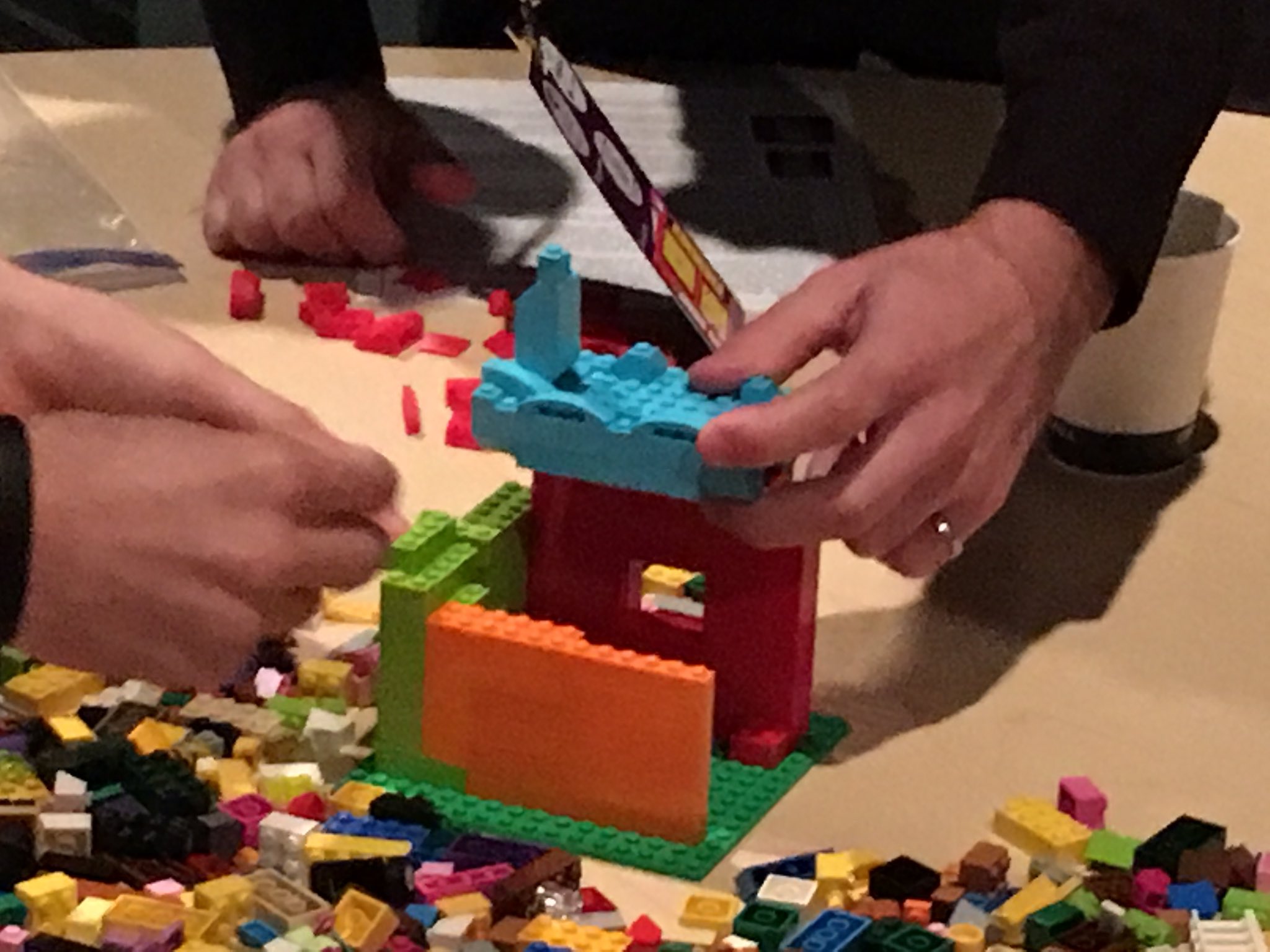Most teams are a bunch of individual silos that have become good at passing work between each other. This exercise is designed to show how real collaboration is different from the way we normally work.
Round 1: Building in silos
Instructions
A pile of LEGO® bricks is placed in the center of the table and each participant is asked to pick up one brick to indicate which colour they will be building with. I suggest that if everyone picks the same colour, they’ll be very unhappy later. I really want everyone to have a different colour but I don’t force that as it can lead to interesting conversation if they all pick the same.
The table is instructed to build a house, with the following constraints.
- There is no talking. They’re welcome to gesture and wave their hands about but no speaking or writing things for each other.
- Each person may only touch one colour of brick - the colour that was assigned above. Sometimes there are colours with nobody able to touch them and that makes things interesting.
- The house must have one window and one door.
- We’ve given about ten minutes for this part of the build when doing it in a conference setting. You want enough time for them to build something significant.
Debrief
- “How did that feel?”
- “Discuss the amount of collaboration that was seen.”
Normally we see large blocks of the same colour (see picture) where people worked individually before trying to merge. Discuss that.
Round 2: Building collaboratively
Instructions
Disassemble the previous build although each participant retains the same colour.
This time the table is instructed to build a pirate ship, with the following constraints.
- Talking is allowed.
- Each person is only allowed to pick up a brick of their assigned colour but once off the table, it can be passed to someone else who can assemble bricks together. If it touches the table again then it can only be picked up by the person who is assigned that colour.
- The ship must have a sail
Debrief
- “How did that feel?”
- “Discuss the amount of collaboration that was seen.”
This time we usually see do see actual collaboration. Discuss that. - “Compare this build to the first”
Generally people enjoy the second build more and the results are better for that one as well.

